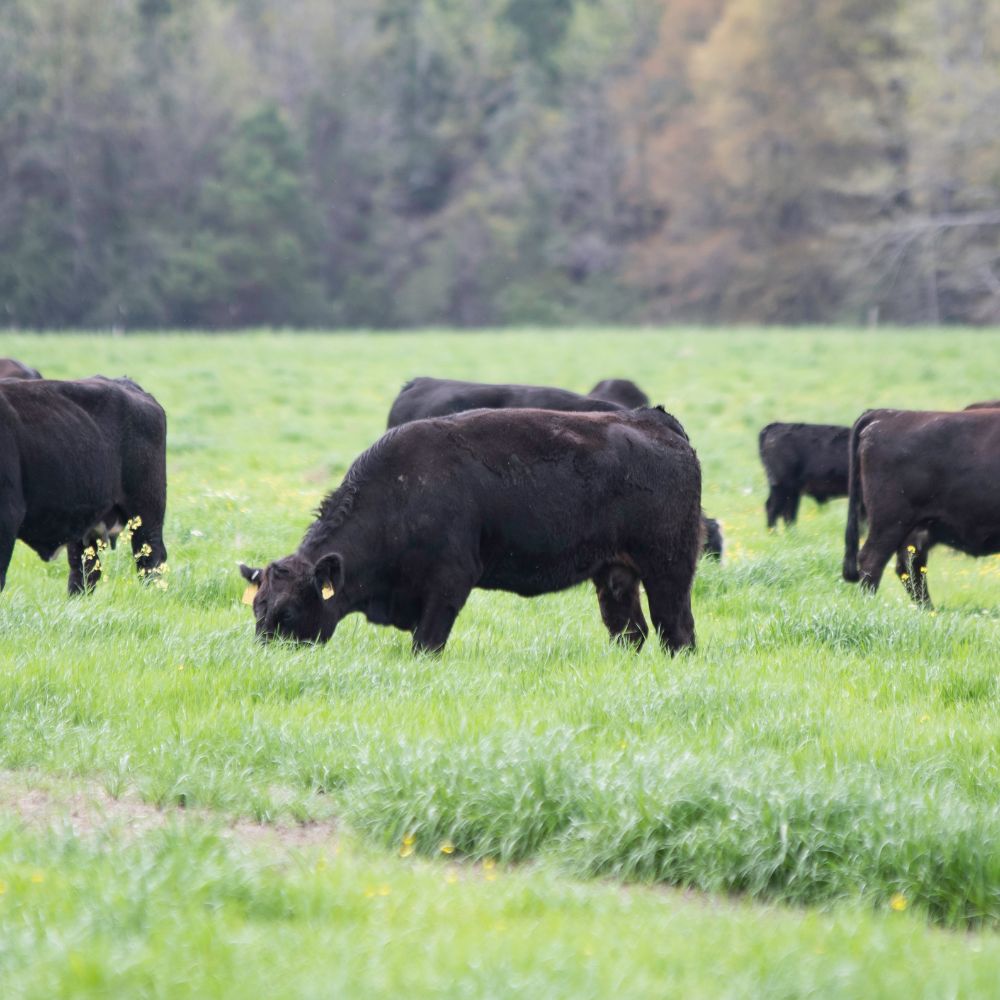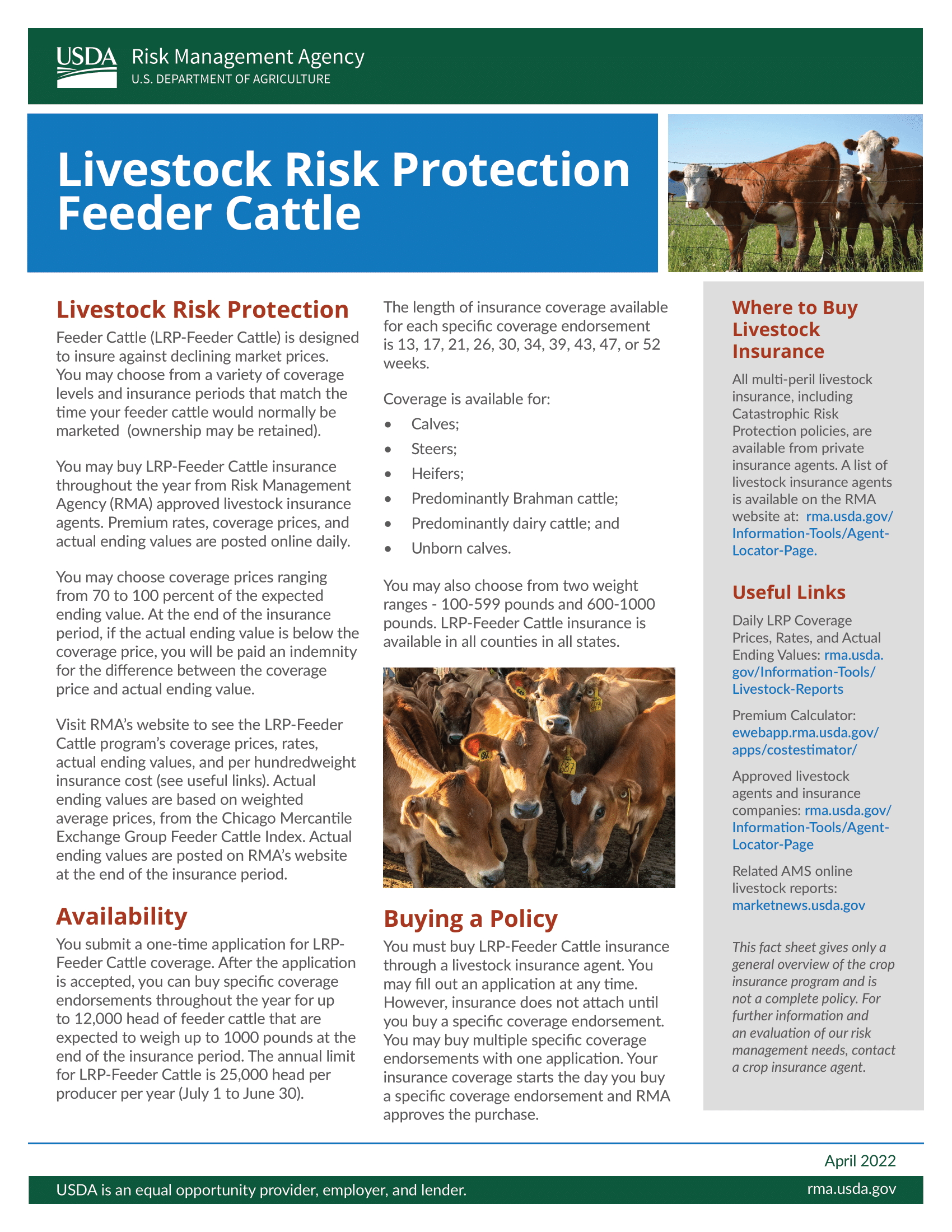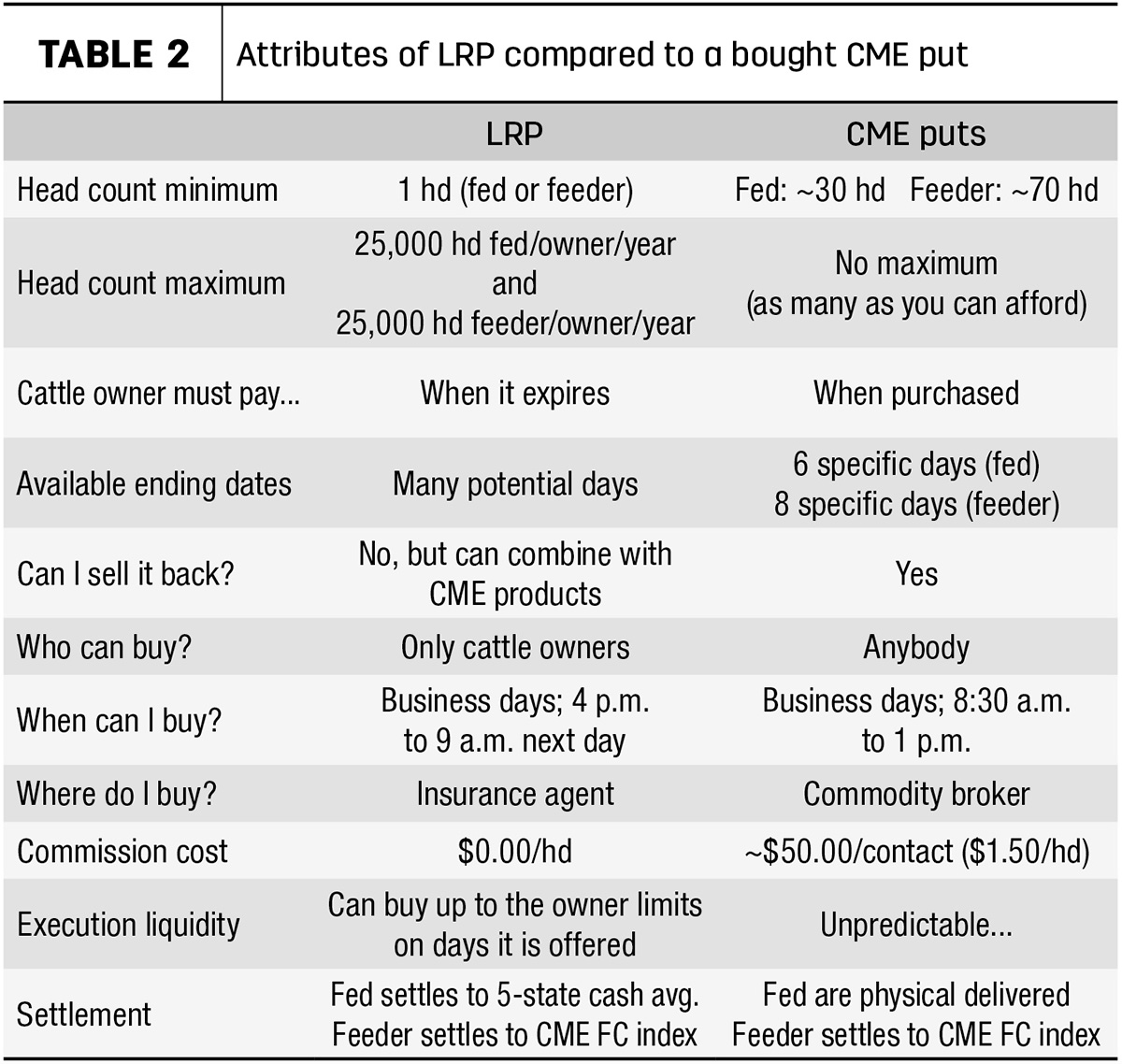Trick Aspects to Think About When Choosing Animals Risk Security (LRP) Insurance Coverage
When assessing options for Animals Threat Protection (LRP) insurance policy, a number of vital elements necessitate careful factor to consider to make certain efficient threat management in the farming market. Choosing the best protection choices customized to your certain livestock procedure is extremely important, as is understanding exactly how superior prices associate with the level of protection supplied. Furthermore, the qualification criteria for different sorts of animals and the adaptability of the plan to adapt to changing circumstances are important elements to weigh. Additionally, the efficiency and transparency of the cases process can substantially impact the total experience and economic end results for livestock producers. By strategically browsing these important elements, manufacturers can safeguard their investments and alleviate possible threats properly.
Protection Options
When considering Livestock Danger Defense (LRP) insurance policy, it is important to recognize the different coverage choices readily available to alleviate threats in the farming field. Animals Danger Defense (LRP) insurance uses different insurance coverage choices customized to meet the varied demands of animals manufacturers.
One more important insurance coverage alternative is the recommendation period, which establishes the size of time the coverage is in impact. Producers can pick the endorsement duration that finest suits their manufacturing cycle and market problems. Additionally, protection levels and rates differ based on the kind of animals being insured, giving producers the versatility to customize their insurance plans according to their specific demands.
Comprehending the different protection options readily available under Livestock Danger Defense (LRP) insurance is crucial for producers to make informed decisions that properly secure their animals operations from market uncertainties.
Costs Prices

Animals Risk Security (LRP) insurance coverage supplies important insurance coverage alternatives tailored to reduce risks in the farming field, with a considerable aspect to take into consideration being the estimation and structure of premium prices. These include the kind and number of livestock being guaranteed, the coverage degree picked, the present market costs, historic price data, and the length of the coverage duration.
Premium expenses for LRP insurance policy are generally determined based upon actuarial data and risk assessment versions. Insurance providers analyze historic data on animals costs and production prices to identify a proper premium that shows the degree of threat included. It is vital for animals manufacturers to very carefully review premium costs and insurance coverage choices to ensure they are properly safeguarded versus potential economic losses because of unfavorable market problems or unpredicted events. By comprehending just how exceptional prices are calculated and structured, manufacturers can make enlightened choices when selecting the right LRP insurance coverage for their procedure.
Qualified Animals
The resolution of eligible animals for Livestock Threat Defense (LRP) insurance coverage includes mindful consideration of specific criteria and features. Livestock types that are typically qualified for LRP insurance coverage include feeder livestock, fed lambs, swine, and livestock.
Feeder livestock, for instance, are typically eligible for LRP coverage if they fall within defined weight arrays. Fed cattle may also be qualified, yet they need to meet specific weight and top quality grade requirements. Swine eligible for protection usually include market weight animals intended for slaughter. Lambs are an additional group of livestock that can be considered for LRP insurance coverage, with factors such as weight and age playing an important function in establishing their qualification.
Prior to selecting LRP insurance coverage for livestock, producers ought to meticulously evaluate the qualification criteria described by the insurance policy company to ensure their animals fulfill the necessary demands for coverage.
Plan Flexibility
Policy adaptability in Livestock Threat Protection (LRP) insurance policy permits producers to customize protection to match their particular requirements and take the chance of administration index techniques. This versatility encourages animals manufacturers to tailor their insurance plans based on factors such as the type of livestock they have, market conditions, and private threat tolerance degrees. By supplying adjustable alternatives, LRP insurance enables manufacturers to efficiently manage their danger direct exposure while guarding their livestock operations versus unanticipated market volatility.
Insurance Claims Refine
Upon experiencing a loss or damage, producers can launch the claims procedure for their Livestock Danger Protection (LRP) insurance by without delay contacting their insurance coverage supplier. It is critical for producers to report the loss asap to accelerate the claims procedure. When reaching out to the insurance provider, producers will certainly need to offer detailed info concerning the case, including the date, nature of the loss, and any kind of relevant paperwork such as veterinary documents or market value.

After the evaluation is full, the insurance copyright will make a decision pertaining to the claim and interact the end result to the producer. The manufacturer will obtain compensation according to the terms of their Livestock Danger Protection (LRP) insurance coverage policy if the claim is accepted. It is crucial for producers to be accustomed to the insurance claims procedure to ensure a smooth experience in case of a loss

Conclusion
To conclude, when selecting Livestock Threat Security (LRP) insurance policy, it is necessary to consider protection alternatives, premium expenses, qualified animals, plan flexibility, and the insurance claims process. These essential factors will certainly help guarantee that farmers and herdsmans are sufficiently protected versus possible dangers and losses related to their livestock operations. Making a notified decision based upon these factors to consider can ultimately result in much better monetary security and assurance for animals manufacturers.
Animals Risk Defense (LRP) insurance policy offers different insurance coverage alternatives customized to meet the varied requirements of animals manufacturers.The determination of eligible livestock for Livestock Threat Defense (LRP) insurance policy coverage involves her comment is here mindful consideration of specific criteria and characteristics.Plan versatility in Livestock Threat Defense (LRP) insurance coverage permits manufacturers to tailor insurance coverage to suit their particular needs and run the risk of management approaches.Upon experiencing a loss or damage, manufacturers can initiate the claims process for their Livestock Danger Defense (LRP) insurance by without delay contacting their insurance service provider.In final thought, when picking Livestock Threat Protection (LRP) insurance, it is essential to take into consideration protection alternatives, premium costs, eligible livestock, plan versatility, and the cases procedure.